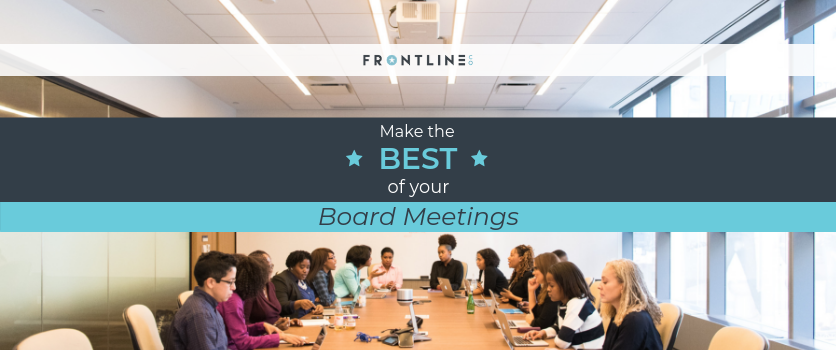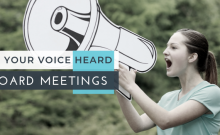How often have you thought to yourself, “Wow, what a great board meeting”? I’m going to go out on a limb and guess your answer is one of two things: “Not very often,” or, “Never.”
That shouldn’t be the case. Your board is a collection of busy, important people. It’s your responsibility to make the most of their time, and make sure you’re not wasting it. Streamlining the process and making members feel valued is important. Their contributions guide your association, overcome challenges, identify opportunities and more. Here’s a list of steps your association can take to improve the board meeting experience.
Limit meeting frequency
Avoid scheduling more than four full board meetings a year. Limiting your frequency ensures participants take the meetings seriously. Plus, scheduling fewer meetings encourages greater focus and participation. Of course, if your association is in a period of crisis or transition, you might need additional time together. Consider a conference call, video meeting or email to address issues that crop up between meetings or require immediate attention.
Consider an attendance policy
A board meeting doesn’t work if no one shows up. An attendance policy underscores the importance of participation. Also, making this a requirement communicates the expected time commitment. If you are only having four meetings a year, this shouldn’t be a huge concern.
Set an agenda and stick to it
Sharing an agenda brings focus to your meetings. It also gives participants the opportunity to mull things over beforehand. They’ll be more likely to arrive with ideas, participate in the discussion and stay on track.
Welcome input–but don’t get sidetracked
All too often, one person or issue dominates the discussion. These tangents are dangerous and will quickly derail the meeting from the mission. Your chairperson should be prepared to politely rein in participants if needed. One of the greatest skills a board chair can develop is the ability to ensure that differing opinions are aired, but that issues are efficiently brought to closure.
Avoid committee work
Sometimes board meetings get tactical. Working on projects and issues that aren’t relevant to or appropriate for the board can waste time and derail the board’s function. Committee projects and topics should be handled in committee before bringing them to the board. Check out our recent post on the roles of boards and staff for some thoughts on the subject.
Skip the routine updates
You might have a matter that’s information only and doesn’t call for the board’s input. If so, share that item via email or written report, so there’s more time at the valuable meeting to deal with important matters.
Be sure there’s closure
At the end of the meeting, board members and staff should have a clear idea of what’s next. Share expectations and next steps, so you don’t repeat yourself at the next board meeting and progress continues.
Board meetings may not always be fun, but they can be better. If you need some advice on how to make them more effective and enjoyable, reach out to Frontline. We can empower you to make your board meetings professional and productive, not drawn out and dreadful.






